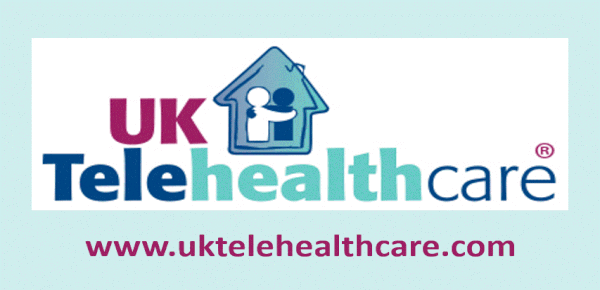A summer hiatus that’s turning out to be a bit longer than expected. Recuperating from a broken left arm and resuming a mostly “normal life” including some vacation has taken appreciably more time than your Editor thought when last posting in late June. (In fact, where the heck did June go?) Getting back into the issues surrounding healthcare technology and healthcare in general has also taken awhile. So this article will be a mix of ‘this and that’ of tying off some stories that were hot in June. Starting with the current drama…
The US Federal Government shutdown and telehealth. It was uniquely constructed to not affect vital citizen services such as Social Security, Medicare, Medicaid, and even access to our national parks–and to be laid at the feet of one party, not the one in control. Life is going on as the shutdown continues. It may end tomorrow with a congressional resolution (CR) kicking the can down the road for a few weeks, it may end in November with the same.
Most affected from our perspective: Medicare telehealth flexibilities extended from the pandemic now revert to pre-pandemic rules, except for practices under the CMS Medicare Shared Savings Program (MSSP), practices in the end-stage renal disease (ESRD) program, and mental health. Audio-only reimbursement is terminated as is telehealth beyond the rural health program. Health and Human Services (HHS) has furloughed 41% of employees, over 32,000, though the short-term effect is expected to be minimal.
Continuing: programs such as Medicare, Medicaid, OIG’s Health Care Fraud and Abuse-related activities, parts of other agencies such as NIH direct medical, the Indian Health Service (IHS), FDA medical device and drug reviews, emergency preparedness, and other mandatory services. FierceHealthcare, Healthcare Dive ATA Action is advocating for immediate restoration of Medicare’s telehealth flexibilities, in place since 2020, and the Acute Hospital Care at Home program. One hopes that Senator Schumer and Representative Hakeem Jeffries take note.
Such a deal? Under the shutdown wire, the Administration’s ‘most favored nation’ deal with Pfizer benefits state Medicaid programs and consumers who go on Pfizer’s website and buy drugs direct. In return, Pfizer gets a three-year relief from tariffs on their drugs from the Section 232 probe into the effects of pharmaceutical imports on national security. Details beyond this are scant, but the industry’s lobbying group, PhRMA, has been pressing for allowing drugmakers to sell DTC, bypassing insurers and pharmacy benefit managers (PBM). For commercial and individual insurance, the effect is nil for now. Healthcare Dive unpacks it.
 Big deals continue. This week, VC giant General Catalyst, of which this Editor took a very dim view back in February, closed its $515 million acquisition of Summa Health, a non-profit integrated healthcare system based in Akron, Ohio. The acquisition through its HATco subsidiary was announced in January, but had to be boosted by $30 million and meet additional conditions to pass muster with Ohio’s attorney general. How acquiring one regional system advances their goal of “health assurance”, defined as “a more affordable, accessible and proactive system of care”, is To Be Determined. FierceHealthcare
Big deals continue. This week, VC giant General Catalyst, of which this Editor took a very dim view back in February, closed its $515 million acquisition of Summa Health, a non-profit integrated healthcare system based in Akron, Ohio. The acquisition through its HATco subsidiary was announced in January, but had to be boosted by $30 million and meet additional conditions to pass muster with Ohio’s attorney general. How acquiring one regional system advances their goal of “health assurance”, defined as “a more affordable, accessible and proactive system of care”, is To Be Determined. FierceHealthcare
Evolent Health is exiting the ACO business, selling it to competitor Privia Health for $100 million. The sale adds Evolent Care Partners’ more than 120,000 lives in MSSP, as well as commercial programs and Medicare Advantage. Privia now adds more states and their covered lives will total 1.5 million when the sale closes in Q4. The Medicare ACO business continues to contract to a few players; value-based care and Federally subsidized incentives in MSSP and ACO REACH turned not to be all that. Healthcare Dive
There’s a rundown of other acquisitions and sales rounded up in HISTalk 1 October, indicating a certain liveliness in the market: specialty care coordinator Switchboard acquiring Conduce Health (undisclosed amount), Sunstone Partners taking a majority stake in healthcare cybersecurity/compliance firm Clearwater, AI voice agent developer Assist Health tagging a $76 million Series B round, and others.
In amazement….
- Veradigm still can’t get itself current with its financial filings and submit itself for Nasdaq relisting as of this week. Revenue is still flat, they repurchased $180 million in convertible notes, and got itself a new CEO, Donald Trigg, in what has been a revolving door position. The last interim CEO ankled in April. Veradigm release Insult to injury: a data breach in July (announced to customers 22 September). This affected at least 70,000 patients in Texas and South Carolina, plus customers in California. HIPAA Journal
 23andMe was sold back for $305 million to its co-founder and CEO, Anne Wojcicki. She set up an entity, TTAM Research Institute, a non-profit public benefit corporation (PBC), to buy the company for $305 million. Unlike Regeneron’s $256 million bid, Wojcicki’s TTAM is acquiring Lemonaid along with the main Personal Genome Services and Research Services businesses. TTAM is a clever acronym of the spelled-out 23andMe. The Bankruptcy Court of Missouri approved the sale on 7 July and it closed on 14 July, after no further bids from Regeneron. Interestingly, none of the articles mention Wojcicki’s backers. 23andMe release, CNBC, HIPAA Journal.
23andMe was sold back for $305 million to its co-founder and CEO, Anne Wojcicki. She set up an entity, TTAM Research Institute, a non-profit public benefit corporation (PBC), to buy the company for $305 million. Unlike Regeneron’s $256 million bid, Wojcicki’s TTAM is acquiring Lemonaid along with the main Personal Genome Services and Research Services businesses. TTAM is a clever acronym of the spelled-out 23andMe. The Bankruptcy Court of Missouri approved the sale on 7 July and it closed on 14 July, after no further bids from Regeneron. Interestingly, none of the articles mention Wojcicki’s backers. 23andMe release, CNBC, HIPAA Journal.
To this Editor, selling a company back to the CEO who had full financial control over the company but augured a $6 billion valued company into Chapter 11–nosediving after bad investments, a major data breach and turmoil around its data and privacy–is beyond absurdity. I’m surprised that the bankruptcy judge even permitted it given the history, but she legitimately bested Regeneron’s offer by $50 million. It also included the nearly-finished Lemonaid. Supposedly all business is now ongoing. It’s her risk, her money, as noted in our last article on 3 June. And now her responsibility to make a go of it.
 And a sad goodbye. Longtime Readers will remember John Boden, one of the pioneers (2001) of healthcare tech care management software for supporting older adults and a national expert in eldercare through his ElderIssues firm. He frequently commented on Steve’s and my articles, along with many insightful and funny emails. He was also a former Marine pilot (VMA-6, Vietnam) who wrote about his experiences in ‘Klondike Playboy’. John “Went West” on 4 December last year after a few years of retirement. Editor Steve discovered this during my hiatus. Our sympathies to his wife, children, extended family, and his VMA-6 shipmates. Legacy obituary
And a sad goodbye. Longtime Readers will remember John Boden, one of the pioneers (2001) of healthcare tech care management software for supporting older adults and a national expert in eldercare through his ElderIssues firm. He frequently commented on Steve’s and my articles, along with many insightful and funny emails. He was also a former Marine pilot (VMA-6, Vietnam) who wrote about his experiences in ‘Klondike Playboy’. John “Went West” on 4 December last year after a few years of retirement. Editor Steve discovered this during my hiatus. Our sympathies to his wife, children, extended family, and his VMA-6 shipmates. Legacy obituary
Thank you for your patience! My articles will be ramping up slowly as therapy continues. I’ll also be catching some additional vacation after next week.













Most Recent Comments